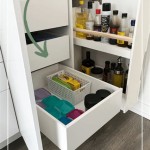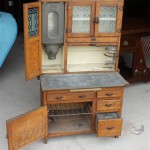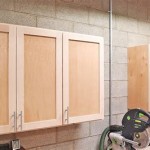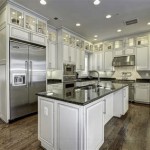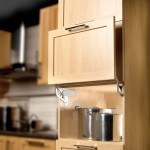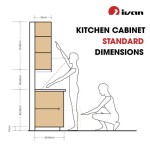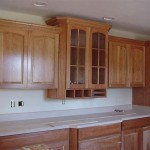Solid Wood Kitchen Cabinet Doors: A Comprehensive Guide
Solid wood kitchen cabinet doors represent a significant investment in home aesthetics and functionality. Their enduring appeal lies in their inherent beauty, durability, and the character they bring to the kitchen space. Understanding the various aspects of solid wood doors, from wood species to construction methods and maintenance, is crucial for making an informed decision that aligns with individual needs and preferences.
This article aims to provide a comprehensive overview of solid wood kitchen cabinet doors, exploring their advantages, disadvantages, different wood types, construction details, finishing options, and maintenance considerations. By understanding these factors, homeowners can confidently choose solid wood doors that elevate the overall style and longevity of their kitchen.
Advantages of Solid Wood Cabinet Doors
The inherent benefits of solid wood cabinet doors extend beyond mere aesthetics. They offer tangible advantages in terms of durability, repairability, and long-term value. These advantages justify the potentially higher initial investment when compared to alternative materials.
Durability and Longevity: Solid wood, by its very nature, is a robust material. Properly constructed solid wood cabinet doors can withstand the rigors of daily use in a high-traffic kitchen environment. They are less prone to denting, scratching, and warping compared to engineered wood products like particleboard or MDF. This inherent strength translates to a longer lifespan and reduced replacement costs over time.
Aesthetic Appeal and Timelessness: The natural grain patterns and color variations inherent in solid wood create a unique and inviting aesthetic. Whether it's the warm tones of cherry or the clean lines of maple, solid wood doors add a touch of elegance and sophistication to any kitchen design. This timeless appeal ensures that the cabinets remain stylish and desirable for many years, regardless of changing trends.
Repairability and Refinishing: Unlike cabinets made from composite materials that are often difficult or impossible to repair, solid wood doors can be easily repaired if damaged. Dents, scratches, and even more significant damage can often be rectified through sanding, patching, and refinishing. Furthermore, solid wood doors can be refinished to update their color or sheen, allowing homeowners to refresh the look of their kitchen without replacing the entire cabinetry.
Increased Home Value: Properly maintained solid wood cabinet doors can significantly increase the overall value of a home. Potential buyers often perceive solid wood as a sign of quality and craftsmanship, making it a desirable feature that can set a home apart in the real estate market. This investment in quality materials can yield a substantial return upon resale.
Natural and Sustainable Material (Potentially): While not all wood is sourced sustainably, choosing solid wood from responsibly managed forests can be an environmentally conscious decision. Solid wood is a renewable resource, and when harvested sustainably, it can be a more eco-friendly option compared to materials like plastic or metal. Look for certifications like FSC (Forest Stewardship Council) to ensure that the wood is sourced from sustainably managed forests.
Disadvantages of Solid Wood Cabinet Doors
While the advantages of solid wood cabinet doors are numerous, it's essential to acknowledge the potential drawbacks. These disadvantages often revolve around cost, environmental concerns (depending on sourcing), and the natural properties of wood itself.
Higher Cost: Solid wood cabinet doors generally have a higher initial cost compared to doors made from particleboard, MDF, or other engineered wood products. The higher cost reflects the expense of the raw materials, the skilled labor required for construction, and the overall quality of the finished product. This price difference can be a significant factor for budget-conscious homeowners.
Susceptibility to Moisture and Temperature Changes: Wood is a natural material that is susceptible to changes in humidity and temperature. Fluctuations in these environmental factors can cause wood to expand and contract, potentially leading to warping, cracking, or joint separation in cabinet doors. Proper installation and climate control within the kitchen are crucial for mitigating these risks.
Potential for Warping and Cracking: As mentioned previously, wood's natural tendency to expand and contract can lead to warping and cracking over time. This is particularly true in regions with significant seasonal changes in humidity. Choosing kiln-dried wood and ensuring proper sealing and finishing can help minimize these issues, but they cannot be entirely eliminated.
Requires Regular Maintenance: Solid wood cabinet doors require regular maintenance to keep them looking their best. This includes cleaning with appropriate cleaning products, touching up any scratches or damage, and potentially refinishing the doors every few years to maintain their protective coating. This ongoing maintenance commitment may be a deterrent for some homeowners.
Environmental Concerns (Sourcing Dependent): As previously mentioned, the environmental impact of solid wood depends heavily on its sourcing. Unsustainable logging practices can lead to deforestation, habitat destruction, and negative impacts on local ecosystems. It is crucial to choose cabinet doors made from wood that is certified as sustainably harvested to minimize the environmental footprint.
Types of Wood Used for Cabinet Doors
The choice of wood species significantly impacts the appearance, durability, and cost of solid wood cabinet doors. Each wood type possesses unique characteristics that make it suitable for different kitchen styles and budgets. Understanding the properties of various wood species is essential for making an informed decision.
Maple: Maple is a popular choice for kitchen cabinets due to its hard, dense nature and smooth, even grain. It is a light-colored wood that takes stains well, making it versatile for a variety of design styles. Maple is generally more affordable than cherry or walnut but offers excellent durability and a clean, modern look.
Cherry: Cherry is a premium hardwood prized for its rich, reddish-brown color and smooth, uniform grain. It is a moderately hard wood that is relatively easy to work with, making it a favorite among cabinet makers. Cherry develops a deeper, richer patina over time, adding to its desirability. It is typically more expensive than maple due to its limited availability and higher demand.
Oak: Oak is a classic choice for kitchen cabinets, known for its distinctive grain pattern and strength. It is a durable and affordable hardwood that is available in both red oak and white oak varieties. Oak is often stained or finished with a clear coat to highlight its natural grain. While it was extremely popular in the past, its prominence has waned slightly in favor of smoother-grained options.
Walnut: Walnut is a luxurious hardwood with a rich, dark brown color and a beautiful grain pattern. It is a relatively soft wood compared to maple or oak, but it is still durable enough for cabinet doors. Walnut is often used in high-end kitchens and furniture due to its elegant appearance and premium price point.
Hickory: Hickory is one of the hardest and strongest hardwoods available. It has a rustic look with significant color variation and a prominent grain pattern. Hickory is a good choice for those seeking a durable and character-rich cabinet door. It can be more challenging to work with than other hardwoods due to its density. It is often chosen for farmhouse or country-style kitchens.
Alder: Alder is a softer hardwood that is often used as a more affordable alternative to cherry. It has a light brown color and a relatively consistent grain pattern. Alder is easy to work with and readily accepts stains and finishes. It is a good option for those seeking a traditional or transitional style kitchen.
Beyond these common species, other wood types like birch, ash, and even exotic woods like mahogany are sometimes used for cabinet doors, each offering unique aesthetic and performance characteristics. The selection should always consider the intended design style, budget, and desired level of durability.

Inde Art Custom Build Kitchen Cabinets With Solid Reclaimed Teak Wood Door Drawer Fronts Design House
.jpg?strip=all)
Choosing Your Favourite Kitchen Door Styles Solid Wood

Solid Wood Glass Door Kitchen Cabinet With Blum Hardware China Kitcen Design Made In Com

Woodline Sliding Door Polished Finish Solid Wood Kitchen Cabinets At Best In Jaipur Line Industries

Solid Wood Kitchen Cabinet Door Designs Natural Component Stained Many Color Brown Purple White Cupboard Doors Styles

Kitchen Cabinet Doors With Solid Wood Panels By Allstyle

Good Quality Solid Wood Cabinet Door Panels Real Kitchen Cabinets China Made In Com

Get Started On Your Project Quote Solid Wood Kitchens Kitchen Cabinets Rustic

Theril Or Solid Wood Cabinet Doors Now

Solid Hardwood Cabinet Doors In And Outside Your Home
Related Posts

